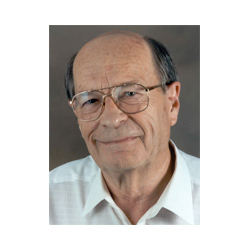
Harvey: What’s your opinion of “euphonic” (even order) distortion products?
Rupert Neve: Harvey, this is another big subject.
Many years ago I listened to a lecture by Dr. James Moire at the British Institute of Radio Engineers, who had researched human sensitivity to the different orders of harmonics.
Odd harmonics are much more readily perceived and are usually destructive to listening pleasure.
Whereas even harmonics tend to be benign I did some work on this a few years ago and constructed a chart based on James Moire’s findings and of many friends in the industry, which chose that human sensitivity to harmonics is proportional to the frequency.
In fact it is hard to put into words but if I could show you this chart…. I would be happy to publish it. The important point here is once again the incredible sensitivity of humans to small distortions or restrictions in amplifier performance which result in pleasure or frustration.
chrissugar: Considering that people like the classic Neve sound, do you have any plans to remake these devices?
Rupert Neve: No designer wants to put the clock back and indeed, there were many subtle differences in these old designs depending upon the year that they were made and the available components I regard many of these now as “effects units.”
I have concentrated on pure designs which will be, or I should say, which are totally transparent.
I have seen many studios use the old classics in this way to enhance the performance of, shall we say, less satisfactory designs…
But, yes, we are expecting in the next 12 months to issue a range of units which will have a behavior similar to the old classics. The size and price of these is significantly lower than the originals so if you’re thinking of buying any more of my old modules wait and see what is announced in the next few months.
dbock: I believe that the 1081 (class AB, four bands + shelves) modules came after the 1073’s (class A, fewer features).
I’ve long wondered if the dramatic changes that occurred when moving from the 73 to the 81 were primarily engineering driven, market driven (and if it was market driven, what was causing engineers of the time to demand such a very class AB sound), or some combination of the two?
Rupert Neve: Let’s see. Well ,the engineers did not demand an AB sound but there was more component density and consoles were getting bigger all the time, so we had to reduce the current that was drawn by the original circuits. There did not seem to be, at that time, any reason for not doing it.
And, you know, this is progress. We now know what the effect of making those changes is and all I can say is, please, in the next few months, contribute to my pension fund, by purchasing the new stuff which will have taken care of these criticisms, I hope.
jjjj: Is there any advantage in digital audio through a DA and into the AMEK Purepath processed and then out the digital I/O? There has been some discussion that digital recorded samples will benefit from the AMEK processing and re-sampling. What are your thoughts?
Rupert Neve: I’m not quite certain what you mean here. What has been established is that if you mix in the analog domain the integrity of your mixed signals is far more accurate than trying to mix in the digital domain.
The AMEK DIB, which is a driver in a box, incorporates balanced mixing buses. Studios that have used this unit as an analog mixer have been amazed at the way in which the sound comes to life and attains a performance and space which is not available with a digital mix.
Any D/A or A/D places some restrictions on audio performance. One of the significant things that happen when you connect an AMEK Purepath or even one of my old modules (which are transformer modules) is the sonic improvement that seems to be applied to a digital signal.
I’m not sure if that answers the question but at any rate you have given me a platform for my opinion.
